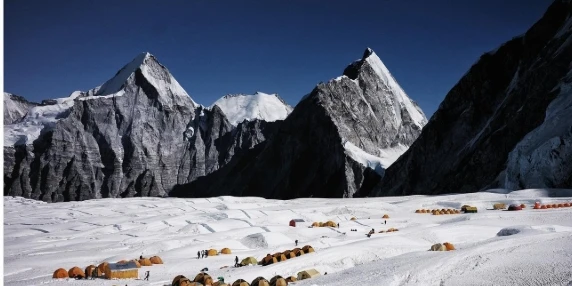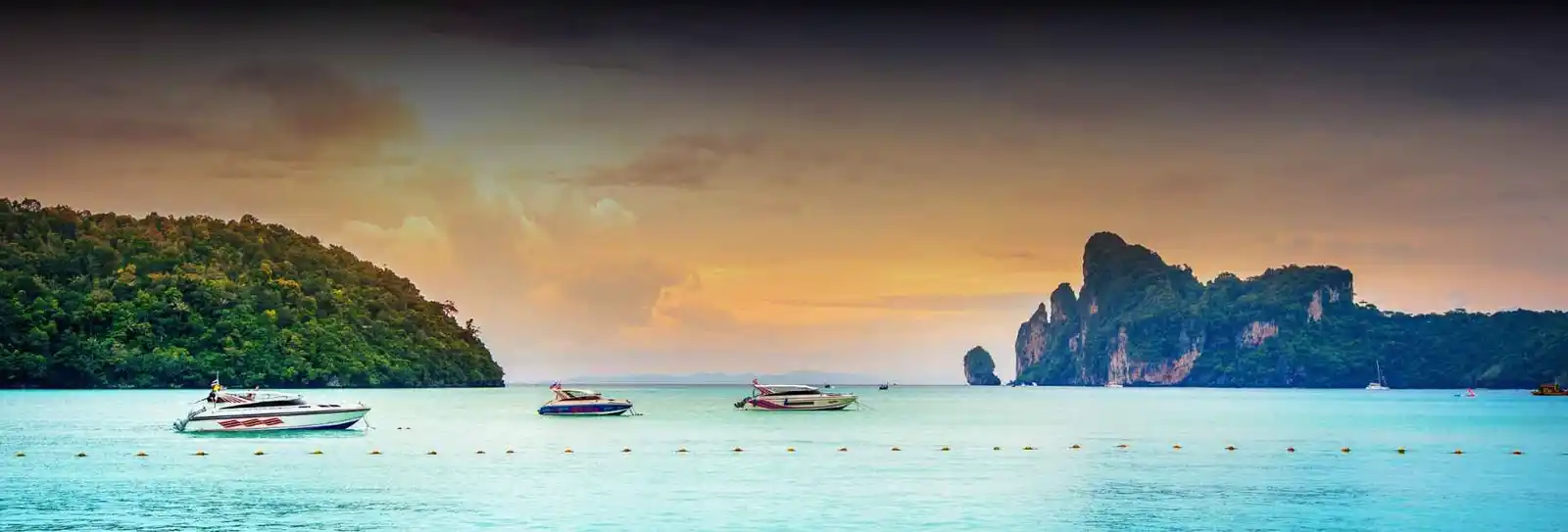
Everest Base Camp Trek will probably be the most unique and rewarding trek in the world, and one that attracts thousands of tourists every year to the core of the Himalayas. In Nepal's Khumbu, the trek takes its path through a few of the planet's most spectacular landscapes, historic Sherpa villages, and ancient monasteries, along the paths of some of the world's highest mountains. It starts with a flight from Kathmandu to Lukla, and Namche Bazaar, Tengboche, Dingboche, and Gorak Shep trek to the mythical Everest Base Camp at 5,364 meters. Along the way, tourists are rewarded with beautiful views of Everest, Lhotse, Nuptse, and Ama Dablam. The trekking itself is a cultural trek with the trail going through prosperous mountain villages and familiarising with Sherpa culture. Acclimatisation is also a part of the experience since the body can acclimate to high altitude, making the experience a safe one.Everest Base Camp Trek is physically demanding but technically not demanding, making the trek possible for people with good physical strength and willpower. Whether it is the excitement of standing at the base of the world's highest mountain or the breathtaking beauty of the Himalayas, this trek would be a memory one would never forget. The Namche Bazaar surrounding areas of the Everest Base Camp Trek are most prominent as the route in. Namche Bazaar is a bustling Sherpa village at 3,440 meters. One of the prime acclimatisation rest halts for trekkers, it has lodges ranging from internet cafes and bakeries. There is also a museum and a view of Everest and nearby peaks.Nearby Places of the Everest Base Camp TrekTengboche Monastery: Tengboche Monastery, situated at an altitude of 3,867 meters, is the biggest and most significant monastery in the Khumbu. It is nestled between Ama Dablam and is a serene abode and spiritual refuge. One can see monks praying, and one can feel the Tibetan Buddhist cultural heritage.Gokyo Lakes: An outlier to the standard Everest trail, the Gokyo Lakes are a beautiful collection of blue glacial lakes over 4,700 meters in altitude above sea level. Gokyo Ri is also located here, an observation point which offers one of the finest vista views of Everest, Cho Oyu, and the other remaining Himalayan giants.Kala Patthar: While not a technical stop, Kala Patthar (5,545m) is a popular viewpoint shy of Gorak Shep. It offers one of the finest close-up photo opportunities for Mount Everest, especially for sunrises. Trekkers typically climb to Kala Patthar expecting to get great views and ego trips.Best time to visit the Everest Base Camp TrekSpring (March to May): Spring is also a very good season to trek to Everest Base Camp. The weather will mostly be blue sky, moderate temperature, and a Himalayan open summit view. Rainbow-colored rhododendron flowers and various flowers of the mountain line up the trek trail at this time of the season, painting the mountains. The pre-monsoon season is also in this season, and little to no rain or snowfall is possible. This is the season to trek, and trails and tea houses are filled with trekkers from all continents.Autumn Season (September-November): Another good time to hike Everest Base Camp is the fall season. Heavens of the post-monsoon season are crystal clear, and the high mountain vista is breathtaking, and clean, crisp air. The sun in the daytime and the evening are pleasant and warm, perfect for hiking. The season is also perfect with great Nepalese festivals such as Dashain and Tihar to be enjoyed, and encounter the local tradition and culture along the trekking trail. Treks are fine and less disturbed by the weather.Everest Base Camp Trek (12 Days)Day 1: Fly to Lukla (2,860 m) & Trek to Phakding (2,610 m)Flight: 30 minsTrek: 3-4 hoursHighlights: Scenic flight, view of Dudh Koshi RiverDay 2: Trek from Phakding to Namche Bazaar (3,440 m)Trek: 6-7 hoursHighlights: Suspension bridges, view of Mt. EverestDay 3: Acclimatisation Day at Namche BazaarShort hike to Everest View Hotel or KhumjungHighlights: Panorama view of Everest, stroll around Sherpa townDay 4: Trek from Namche Bazaar to Tengboche (3,860 m)Trek: 5-6 hoursHighlights: Tengboche Monastery, view of Ama DablamDay 5: Trek from Tengboche to Dingboche (4,410 m)Trek: 5-6 hoursHighlights: View of Island Peak, easy ascentDay 6: Acclimatisation Day at DingbocheOptional trek to Nagarjun Hill (5,100 m)Acclimate your body to the high altitudeDay 7: Trek from Dingboche to Lobuche (4,940 m)Trek: 5-6 hoursHighlights: Climbers' memorials, breathtaking mountain viewsDay 8: Lobuche to Gorak Shep (5,164 m) & Everest Base Camp (5,364 m)Trek: 7-8 hours (round trip)Highlights: EBC arrival, Khumbu IcefallDay 9: Kala Patthar (5,545 m) trek & Pheriche (4,280 m) trekTrek: 7-8 hoursHighlights: Sunset view from Everest, sunrise view at Kala Patthar is bestDay 10: Pheriche to Namche Bazaar trekTrek: 6-7 hoursDescent starts, light load on lungsDay 11: Namche Bazaar to Lukla trekTrek: 6-7 hoursYour trekking time must be factored inDay 12: Return by flight from Lukla to KathmanduTrek finishes, rest or roam around Kathmandu, and timeDay-by-Day Guide to Beat Its MagnificenceHow to Prepare for Your TripPreparation is crucial before your foot even touches the Everest Base Camp trek. Develop your endurance step by step through regular strength and cardio training, leg strengthening exercises, and acclimatisation to long, backpacked treks. Spend money on good trekking equipment—i.e., well-fitting hiking boots and layering clothing to weather for a temperate climate. Travel insurance, altitude sickness statistics, and obtaining necessary permits cannot be overlooked. Organised trekkers have fun too and stay safe while doing so.Physical ConditioningEverest Base Camp trek is a physically demanding activity, and physical fitness is therefore important. Train at least 8–10 weeks before trekking with a mix of cardio (trekking, jogging, or biking), strength training, and long-distance backpack hiking. Build endurance, leg strength, and stamina. Incorporate an uneven trail or stair hiking to replicate trail conditions. A well-conditioned body enables you to walk extended hours, recover quickly, and acclimate well at high altitude.Key Gear and AccessoriesYour backpacking gear can be the key to success or failure on your Everest Base Camp trek. Basic equipment is well-made trekking boots, layering cold-weather clothing, down parka, wicking base layering top, thermal gloves, hat, and water-repellent outer shell. Add UV-blocking sunglasses, sun protection, a headlamp, and a refillable water bottle or hydration system. A good mix of things like an incredible backpack, trekking poles, a sub-zero sleeping bag, and at least first-aid kits is ideal. Being smart and easy on the trail is unpressing.Correct Time to TrekIt's the right time to trek to Everest Base Camp during the spring season from March to May or the autumn season from September to November. The weather is perfect, the weather is peaceful, and the mountain scenery is perfect. Spring is nice weather with blooming rhododendrons and nice temperature, and autumn is cold air and clear visibility. Do not visit during the rainy season (June to August) of heavy rain and landslides, and winter (December to February) if you are well equipped to stand the very cold weather and snowy views.Synchronising Your Physical State to the SeasonsSelecting the best time for your trek should also be determined by your fitness and adaptability to climatic conditions. As a new or moderately experienced trekker, select spring or autumn dry trail seasons, moderate temperature, and the least possible likelihood of climatic delay and altitude sickness. More energetic and more experienced trekkers can use winter trek for mountain summits and snow, but require phenomenal cold-hardiness and endurance. Skip monsoons if you do not want slippery trails, leeches, and poor visibility.Shooting Overcrowding ProblemsEverest Base Camp trail is an off-the-wish-list trail, and high seasons (fall and spring) have the trail packed with trekkers, particularly around Namche Bazaar, Tengboche, and teahouses along the trail. Lodge rooms will be booked, crawling along suspension bridges, and packed trails. For peace and calm, go during early spring (March) or late fall (November) when treks are lean but still great conditions. Bring only for cold nights and fewer inclusions in the shoulder-season weeks.Planning Out Your TrekReserving early will result in a less stressful, more enjoyable Everest Base Camp trek. The normal EBC trek itself is 12 days long with a flight excursion to Lukla and gradual walking higher on the main stops of Phakding, Namche Bazaar, Tengboche, Dingboche, and Lobuche, with Everest Base Camp and Kala Patthar as the final points. Add acclimatisation stops at Namche and Dingboche to avoid the dangers of altitude. With time, energy, and fitness permitting, add side hikes such as Gokyo Lakes or Chola Pass. Leave time in your itinerary for weather cancellations or sickness.Altitude Sickness: Prevention and Advantages AwarenessAltitude sickness is a serious risk when climbing to Everest Base Camp because of a sudden change in altitude. Signs are headache, dizziness, nausea, and breathlessness. Prevention is climbing slowly, letting your body acclimate. Eat high-energy foods, drink plenty of water, and do not drink alcohol. Take rest days at well-organised places such as Namche Bazaar and Dingboche. In case of more symptoms, go straight to the lower altitude. Use drugs such as Diamox (after taking permission from a doctor), and also maintain body care to have a safe and enjoyable trek.Trekking with a Guide: Advantages and DisadvantagesA guided trek to Everest Base Camp also has some benefits. Benefits are expert knowledge of the region, culture, and acclimatisation protocols, and improved safety in case of an accident. Your guide will book permits, accommodation, and food for you so that you need not worry about anything other than the trek. Disadvantages are additional cost, which will likely be more than self-trekking, and the attitude of other trekkers to keep moving around freely. Finally, such useful advice is given by a guide, particularly for beginners, but it will be based on your money as well as your freedom.How to Reach Everest Base Camp TrekBy Airport to Kathmandu: The easiest method to reach Everest Base Camp is by air travel to Tribhuvan International Airport (TIA) at the capital of Nepal, Kathmandu. The airport is properly connected with Middle Eastern, Asian, and other cities of the world. Foreign visitors usually have to stop over at gateway cities like Delhi, Doha, Bangkok, or Istanbul.Flight from Kathmandu to Lukla: The trekking is indeed starts at Lukla, a small Himalayan village. 30–40 minutes' scenery-filled short but stunning flight from Kathmandu to Tenzing-Hillary Airport at Lukla. Lukla Airport is renowned for its picturesque location and as the entry gateway to the Everest region. It is weather-permitting air, so buffer days are best left free in your itinerary.Trek from Lukla to Everest Base Camp: On arrival at Lukla, the trekking journey begins. The trek goes through some of the biggest villages en route, such as Phakding, Namche Bazaar, Tengboche, Dingboche, Lobuche, and Gorak Shep to Everest Base Camp. Climbing tends to take 12 to 14 days total, with acclimatisation days en route in an attempt to acclimatise at high altitude.Why Book with escape2exploreWhen exploring Everest Base Camp Trek and beyond, escape2explore stands out as a trusted name in adventure and experiential travel. Here’s why hundreds of travellers choose us for their getaways:Trusted, Well-Reviewed Local Operator: escape2explore has gained the trust of thousands of content tourists all over India. With persistent positive feedback and an unblemished reputation for delivering quality experiences, we assure you that your experience will be hassle-free, memorable, and value-packed. Our insider local knowledge guarantees that you will always be in safe hands.Seasoned Guides: Our trips are led by friendly, trained, and professional guides who are passionate about the outdoors and your safety. Whether it's a beach trek, a cultural tour, or a spiritual walk through temples, our team knows the terrain, the stories, and how to make each moment count.Safe & Curated Itineraries: Your safety is our number one priority. Our tour packages are thoughtfully crafted with safety measures, researched accommodations, and easy travel arrangements. We take care of the details so you can have the experience hassle-free and worry-free.Unique Experience That You Won't Find Anywhere Else: With escape2explore, you discover more than the tourist attractions. We go off the beaten track with hidden beaches, unusual treks, offbeat cultural destinations, and true interactions.Read: AMK|Andharban Jungle|Sandhan Valley|Maharashtra Experinece|Tikona Fort


